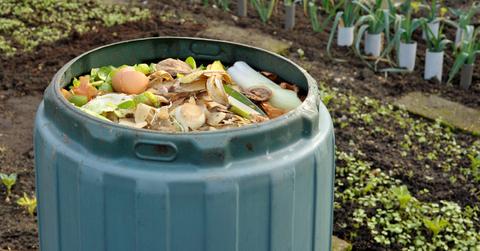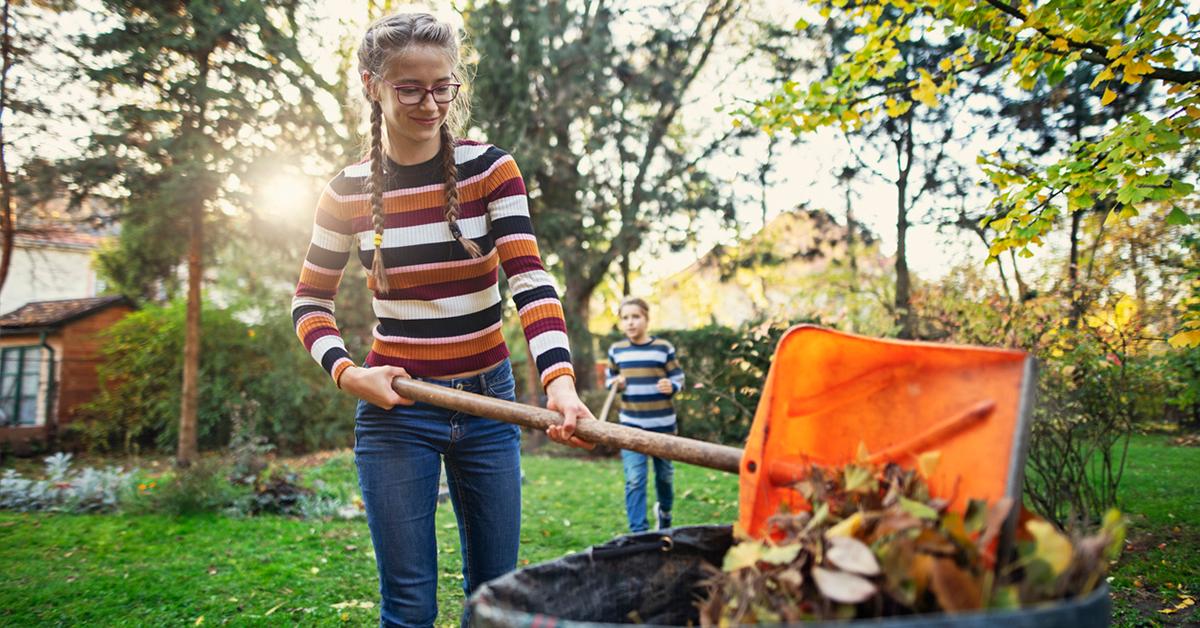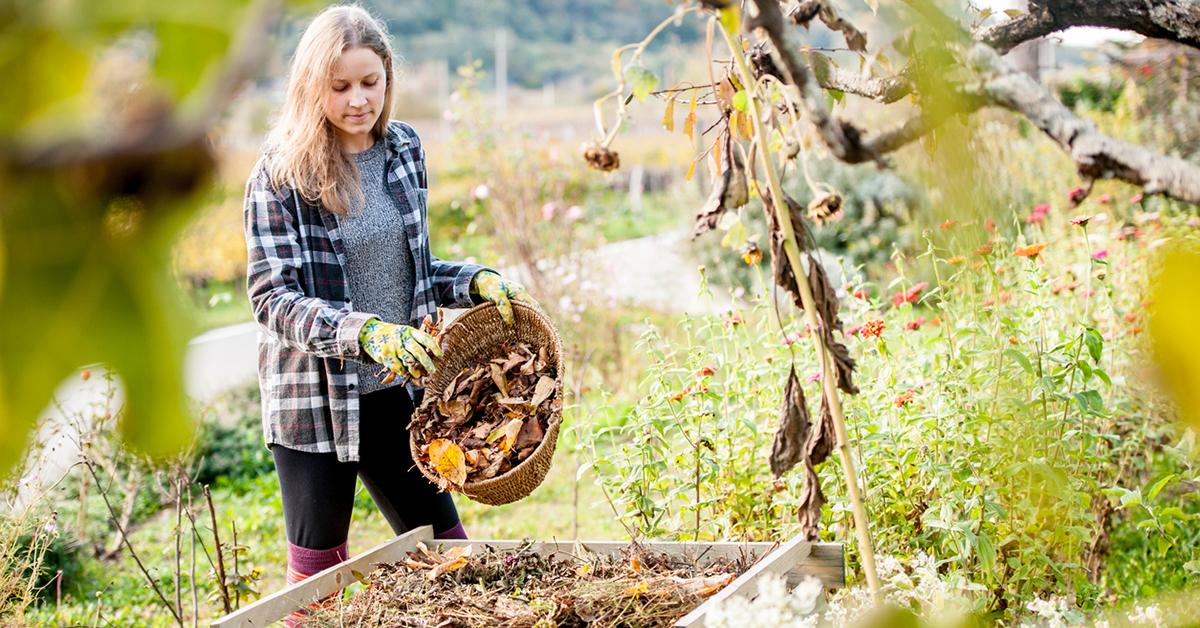How to Start a Backyard Compost
Stuck at home and looking for something to do? Start your own backyard compost!
Updated April 1 2020, 11:28 a.m. ET

In these uncertain times marked by the coronavirus outbreak, we have all experienced significant changes in our daily routines. For you, that might mean having a child home from school seven days of the week, adjusting to a new work-from-home lifestyle, or, sadly, even unemployment. The COVID-19 outbreak has certainly affected us in big ways — like closing schools and threatening job security around the country — but we cannot deny that it has also impacts us in smaller ways, as well.
Maybe the things you need from Amazon are on backorder. Maybe your grocery store is limiting the amount of milk and eggs you can buy. Or maybe some of your weekly services are no longer available right now. It’s all tenuous but luckily, certain things have a few workarounds.
Since so many businesses and services have shut down right now, you might be searching for things you never searched before. And one of those things might be how to handle your compost at home. Let’s be honest, so many of us use compost pick-up services, but during COVID-19, they might not be running. Sure, it’s a case-by-case scenario, but if you find yourself Googling “how to start a backyard compost” here’s what you need to know.
What Is Composting?
Compost is decayed organic matter or anything that comes from nature that naturally decomposes. This decayed organic matter either naturally turns to soil or can be used as fertilizer to grow new plants. To that end, the process of composting is letting organic matter decompose naturally instead of throwing it away like trash where it will sit in a landfill and take longer to decompose due to the surrounding environment.
What Can Go in the Compost?

Anything that comes from nature — anything that’s organic — is compostable, which means it will break down naturally in a compost. If an item is compostable, it is better to compost it rather than throw it away in the trash. At the landfill, some natural items will not break down as quickly.
Fruits and vegetable scraps, peels, pits, or rinds are all compostable. Plant-based foods can be composted as well as grains, bread, nuts, cookies, coffee grounds, tea leaves, and eggshells. Yard waste can also be composted — garden clippings, twigs, leaves, grass, etc. Types of human waste can be composted, too, including hair and nail clippings. Other items that are 100 percent paper-based can also be composted including paper, cardboard, napkins, toilet paper rolls, paper towels, toilet paper, paper plates, and paper bags. All of these items are compostable and therefore can be added to a backyard compost.
Then there are your items that can break down but need a bit more help than your standard backyard compost. Bioplastic cups, cutlery, phone cases, and even leftover dairy, meat, fish, or bones can be composted in a commercial compost. You want to avoid adding dairy and meat leftovers to a backyard compost because it will likely attract animals and insects.
What Doesn’t Go in the Backyard Compost?
Aside from avoiding putting dairy, meat, fish, and bones in your backyard compost (though they’re perfectly fine for a commercial compost scenario), you should also avoid adding plastic, animal feces, and citrus to your backyard compost.
How to Start a Backyard Compost

Now that you know what can be added to a backyard compost (and similarly, what can’t), let’s get into how to start a backyard compost.
To start, you’ll need a bin for your compost pile. You can choose from bins or tumblers, or you could also make your own out of a storage container, wood, or another material.
Once you have your bin situated, consider what you’ll be adding to your compost pile. There are conflicting camps out there — some people think a ratio of 1:1 greens and browns is ideal, while others think 2:1 is a better ratio. Either way, composts do best when there is a variety of organic matter added to it. That’s why you’ll want to be sure to add eggshells and paper or cardboard from time to time. (Eggshells add necessary calcium the compost needs in order to help plants grow faster; similarly, paper and cardboard brings up the carbon-to-nitrogen content to a 30:1 ratio, which helps quicken the composting process.)
It’s that simple. Set up your bin and start adding food scraps (and other compostable items) to the compost. That’s the main thing you need to do. Beyond that, make sure that your compost is exposed to oxygen and moisture. For those reasons, it’s important to turn the compost regularly. Turning the compost makes sure all sides of it are getting the necessary oxygen exposure the compost needs. (Necessary note: It also keeps it from smelling absolutely terrible.)
Water is also crucial to the composting process. A compost shouldn’t be dry; check it daily to make sure it stays moist. To keep your compost moist, you can use fallen leaves to your advantage. Pile the leaves — about six inches worth, according to Eco Cycle on top of your compost pile; leaves lock the moisture in and keep frost out. Alternatively, you could simply water your compost as if it were a houseplant or garden bed.
How Do I Know If My Backyard Compost Pile Is Working?

According to Earth Easy, certain bugs are a sign of a healthy compost. If you turn over your compost, you should see worms, mites, and mycelium — the white, vegetative part of a type of fungus. Sure, it will take a while to establish these bugs if you’re just getting started, so don’t freak out if you don’t see insects in your backyard compost right away.
If you notice things, especially bigger things, aren’t breaking down, you may need to adjust the size of items you add to your compost bin. As in, break items down smaller. Worms, mites, and fungi are small, which means it takes a ton of effort for them to break down what’s in your compost. The smaller the compostable items you give them, the faster they can work. Bigger items also don’t hold onto moisture as well, so once again, you run the risk of having a too-dry compost.